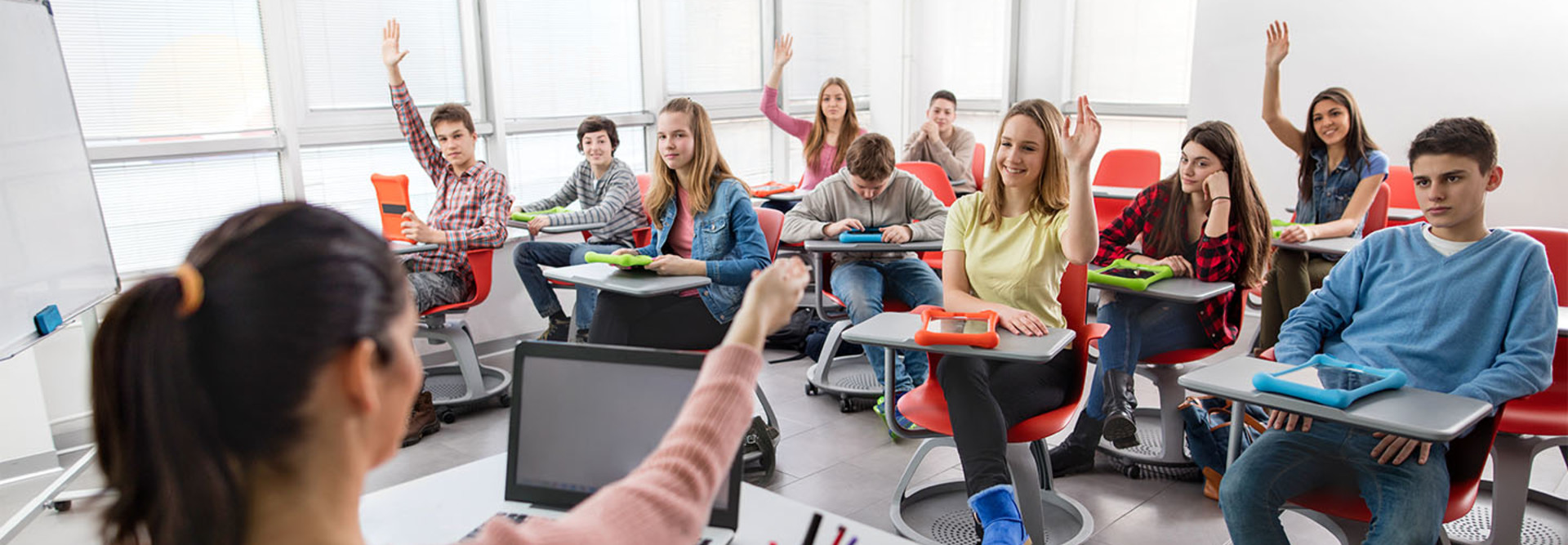What Is a Modern Learning Environment?
Education has shifted dramatically in recent decades — from an emphasis on fact memorization through “drill and kill” and “sage on the stage” teaching styles to a focus on higher-order thinking and future-ready skills such as critical thinking and problem solving. Along the way, schools have raced to incorporate technology, first through stand-alone computer labs, and then through one-to-one device initiatives and massive networking upgrades. But in many cases, the K–12 classroom itself has remained stubbornly static, with students sitting in rows of desks and a teacher delivering instruction at a whiteboard or projector screen at the front of the room.
The concept of the modern learning environment is beginning to change with school districts attempting to align their physical spaces with contemporary pedagogical philosophy. In a modern learning environment, flexible classroom spaces organically integrate technology, helping teachers to better engage students and facilitate the mix of independent, small-group and whole-class learning that is now viewed as essential to student success.
Typically, a modern learning environment incorporates three key elements: connected devices (such as notebooks, tablets or even smartphones); audiovisual tools (including projectors and touch-screen displays); and purposeful furniture that allows students to learn in different ways at different times (such as standing desks, collaborative workstations and connected seating).
SIGN UP: Get more news from the EdTech newsletter in your inbox every two weeks!
Today's Classrooms Embrace Tech in All Aspects of Learning
While the concept of outfitting classrooms with connected devices is certainly not new, the reality is that student devices are often not put to their highest use, precisely because they are sometimes seen as an afterthought — or an “add-on” — rather than as tools that are essential to teaching and learning. Most school buildings predate the tablets and laptops that students are using by several decades, and although school leaders have done their best to incorporate technology into instruction, they have been aiming at a moving target. For a time, many schools relied on laptop carts, but this solution was cumbersome, with teachers unsure of when they would have access to the technology, and whether the computers would be powered up when they needed them.
Some districts have found success with bring-your-own-device policies, but others have found it nearly impossible to manage a computing environment where every student has a different device. Even in districts that have invested in one-to-one programs, leaders have sometimes been disappointed by lackluster adoption, found it difficult to continue funding the programs over time or failed to make the networking upgrades necessary to ensure a high level of performance.
By contrast, modern learning environments are designed with the assumption that students will have constant access to connectivity — and are supported by the back-end technology and teacher training necessary to ensure that student devices play a central role in the classroom.
Similarly, audiovisual solutions in a modern learning environment directly support student learning and engagement.
Depending on grade level and instructional goals, these solutions may include interactive whiteboards, document cameras, multitouch digital displays, projectors and even microphone lanyards for soft-spoken teachers in larger classrooms. The key is not to implement any single audiovisual tool with a one size-fits-all approach, but rather to outfit classrooms with the solutions that will best help teachers reach their students.
Flexible Furniture Provides High-Impact Benefits
Finally, while classroom furniture may seem like a decidedly low-tech solution, it can be a high-impact tool that literally puts students in the right learning posture. A modern learning environment requires a flexible and agile physical setup that will accommodate both independent and group work, and one where students can learn in ways that make them feel comfortable and help them focus.
Perhaps the simplest example of this is the standing desk, which gives students a break from sitting all day, heightens alertness and even helps burn calories. Other types of convertible furniture quickly transform from individual workstations into group gathering spaces. In the business world, adults move around throughout their workdays, going from ergonomic chairs in their offices to conference tables to quiet corners, depending on the task at hand. It’s important that kids be allowed to do the same. Many furniture options now come equipped with USB or three-prong charging ports, helping students to keep their devices powered up throughout the day.
For more information on the benefits of modernizing the classroom, take a look at the CDW whitepaper, "A Modern Learning Environment."








